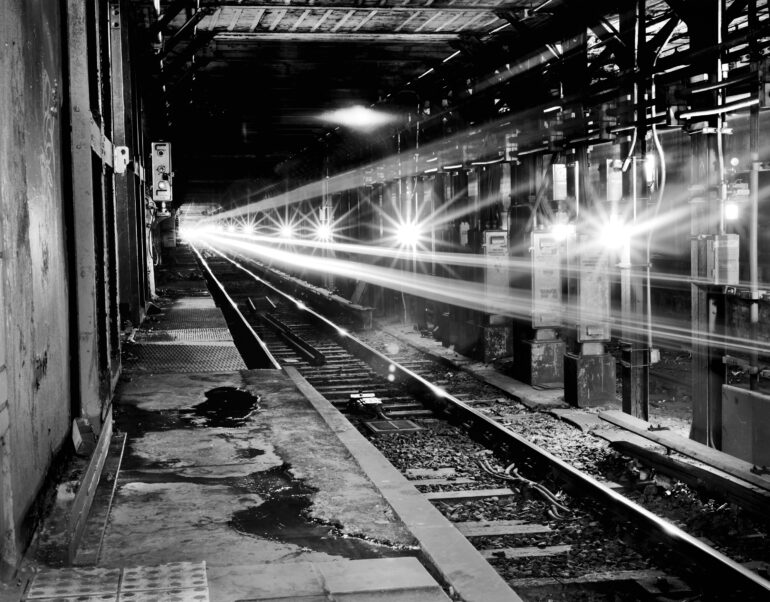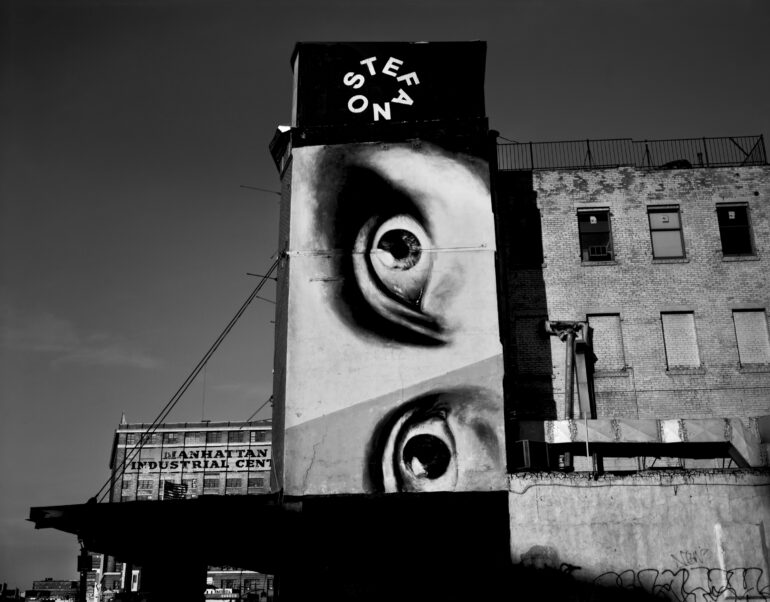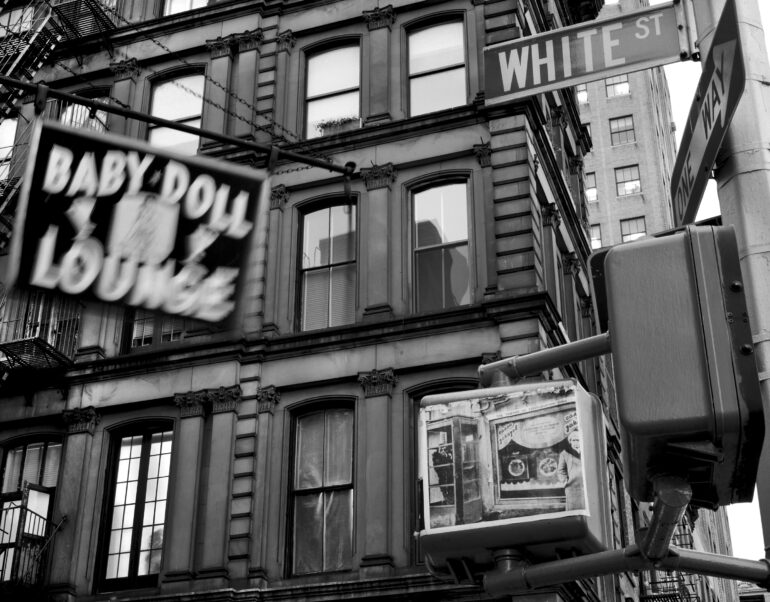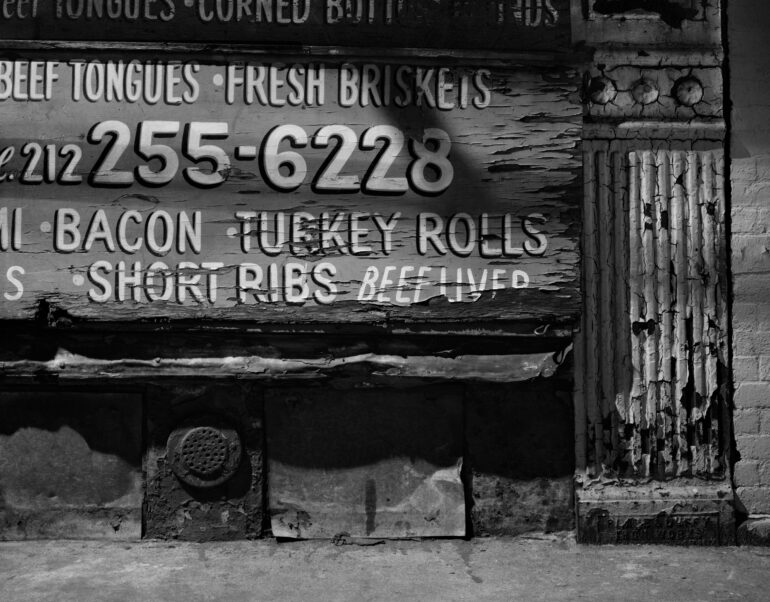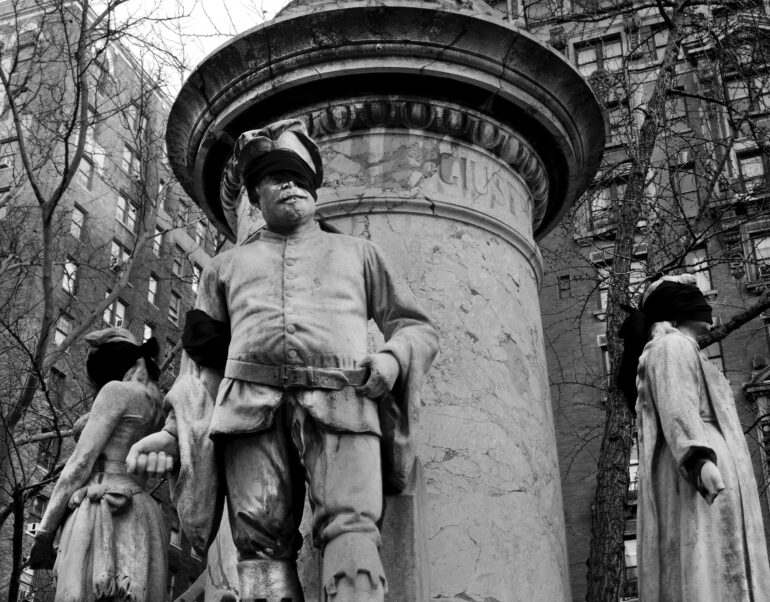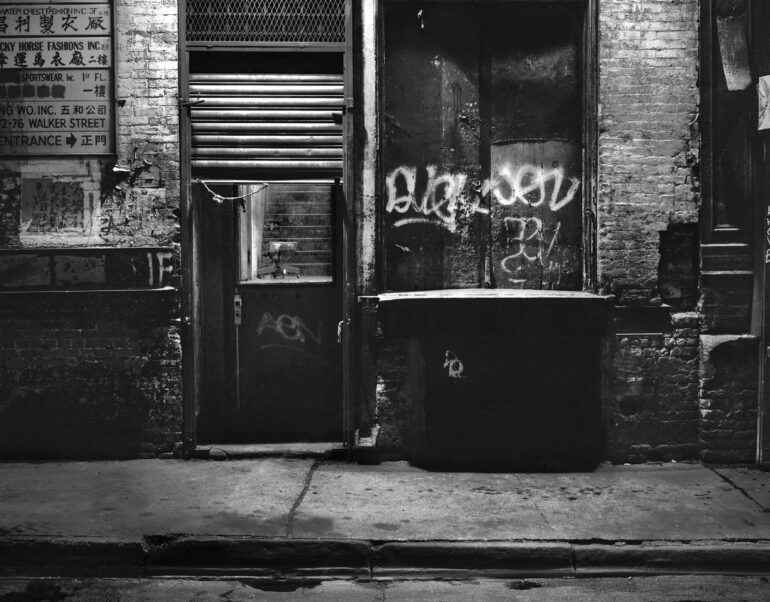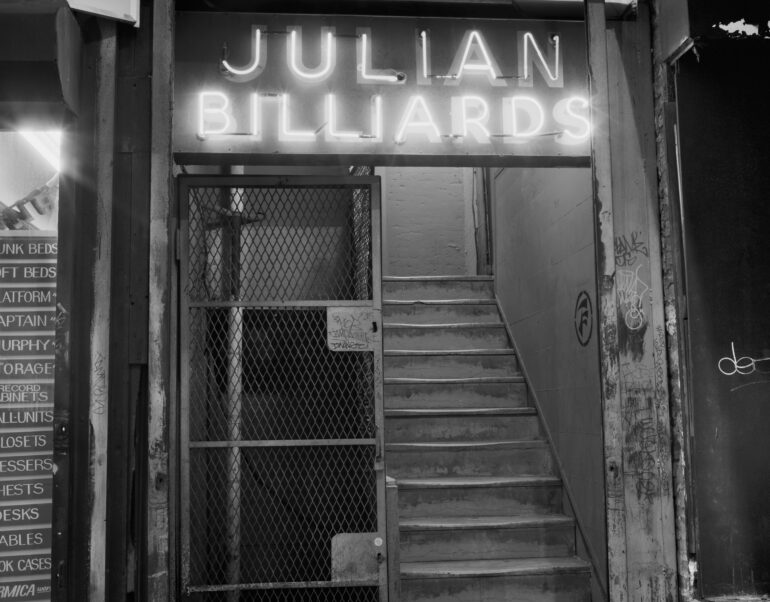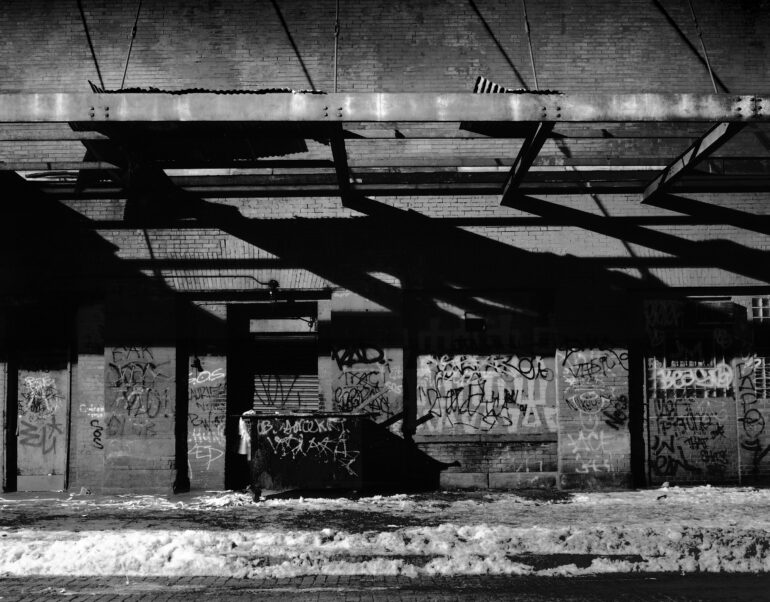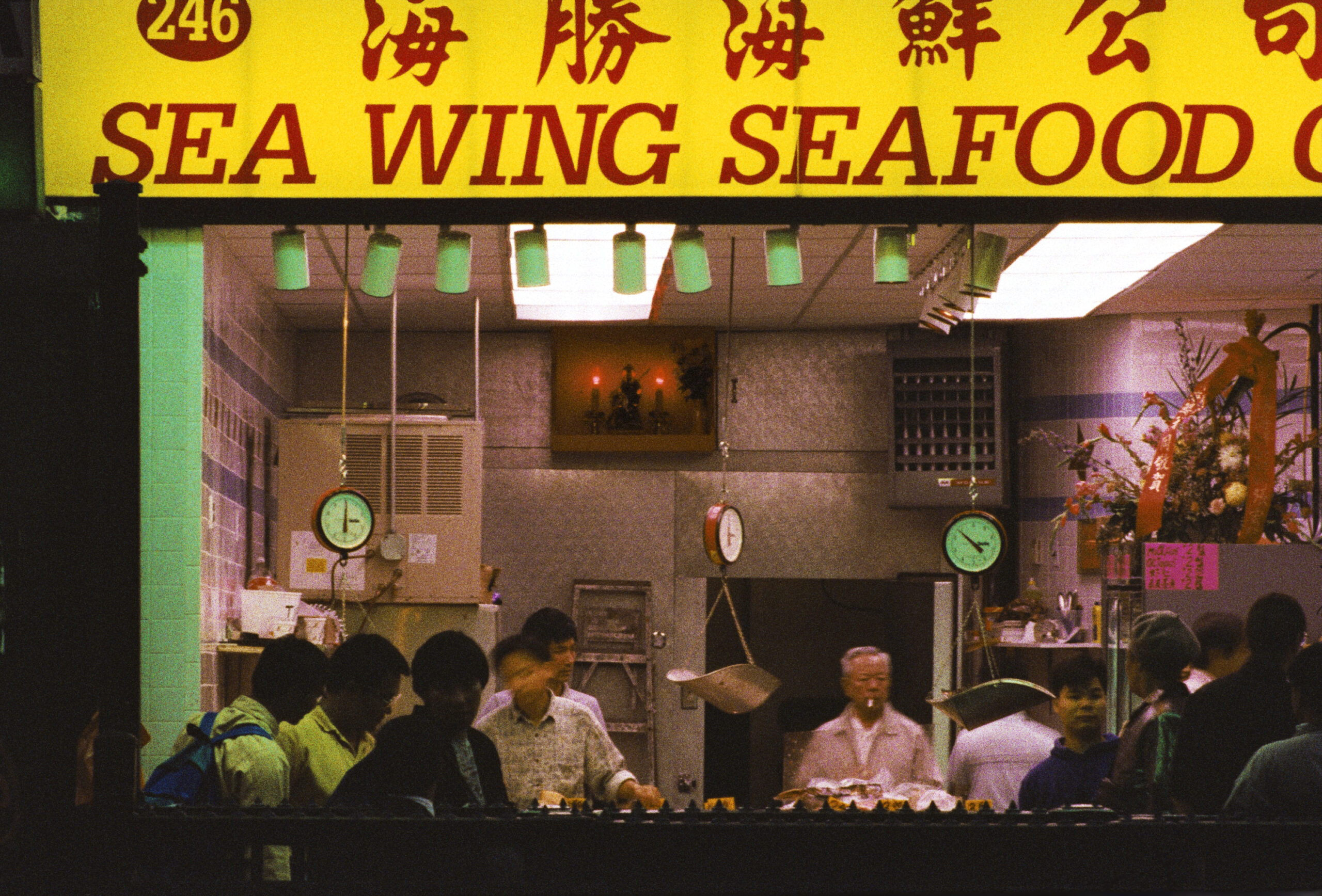t
“I don’t like to shoot photojournalist still photography,” says photographer Bobby Sheehan in an interview with the Phoblographer. “It’s just not my thing. When I do aim a camera at people, I tend to use the camera as an emotional surveillance tool.” He continues to state that what he’s trying to do is possibly reveal what they’re thinking. Some of this is clearly shown in his work, and more will be revealed in the new documentary about Bobby called The Bowery Boy.
All images by Bobby Sheehan. Used with permission.
Table of Contents
The Creative Side
Bobby is a New Yorker with a photography portfolio from the 1970s and on. He’s photographed tons of punk rock bands and other musicians. But some of his most fascinating work is his street photography. When you look at it, you’ll see many painterly scenes that simply amaze you. According to him, a huge part of this has to do with Bobby’s adoration of seeking areas entirely ignored by the rest of the world. Whether it’s a crack on the sidewalk with a puddle of water reflecting the sun, a dark alleyway, or some unique perspective on a building, Bobby is creatively into it.
For me, it’s all about shapes and light. And further, without limitations and conventional use of light. Imagine an isolated area that has virtually no light, if you pay more attention, you will find a few foot candles in the farkness, then a whole new world of shadows and light presents itself. It takes a lot more effort to find these sorts of images, it’s a very manual process. You need patience while working to find an image hiding in plain sight.
Bobby Sheehan
Because of this, Bobby finds shooting at night therapeutic. First and foremost, he likes that there are fewer people and distractions. It’s when he feels he can remain still with my lens open without anyone entering the frame. But it’s also led him into curious instances. Sometimes, he’s had to convince muggers to leave him alone. And he once felt scared enough to pack his gear bag and leave when a homeless man accused him of being on his turf, he tells us.
How Bobby Sheehan Got Into Photography
Bobby got into photography a long time ago and has a fascinating story about it. When he was already a professional photographer, a photo of him less than two years of age was discovered in a storage box. “The image is of me posed against a wall holding a knife/shiv with the shadow of a male photographer cast along the wall next to me,” he explains. “I am fairly certain the shadow is my father.” Bobby never knew his father growing up, so he thinks that it caused a lifelong obsession with photography because he wanted to have a relationship with his dad.
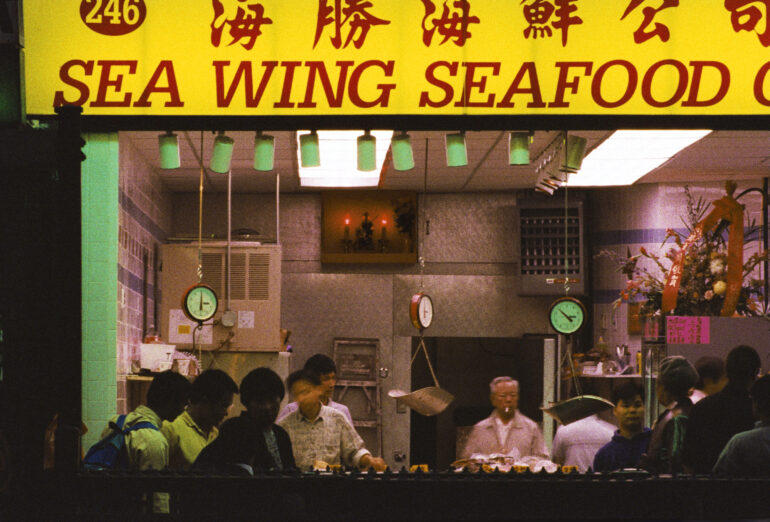
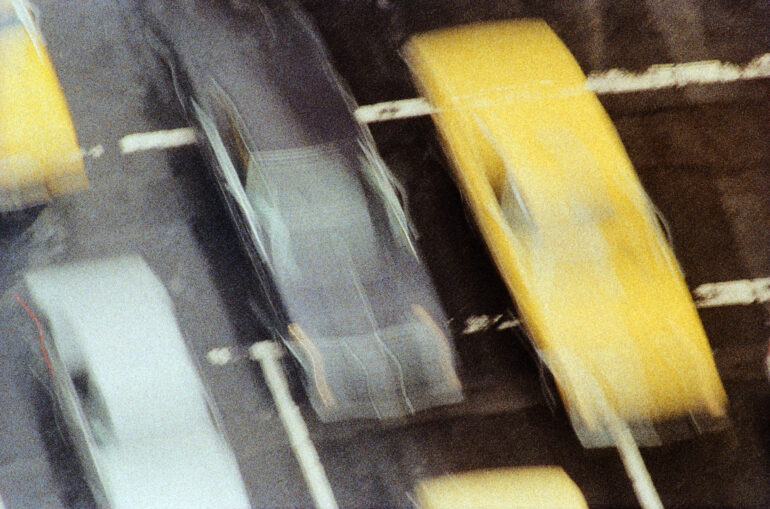
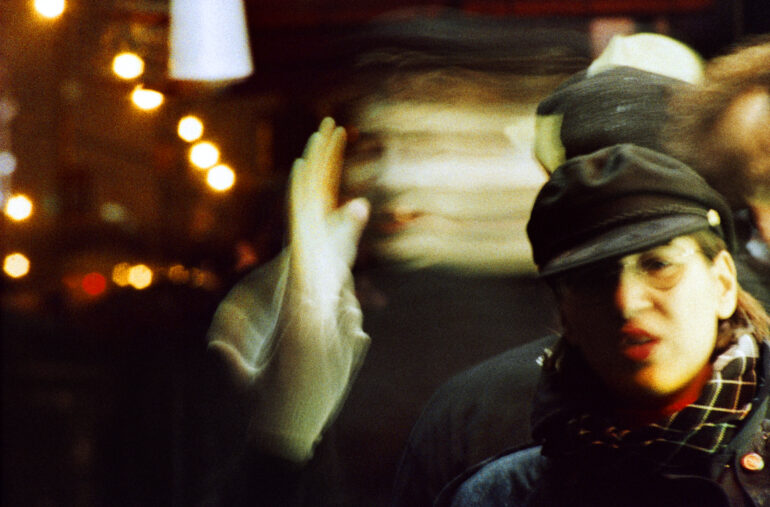
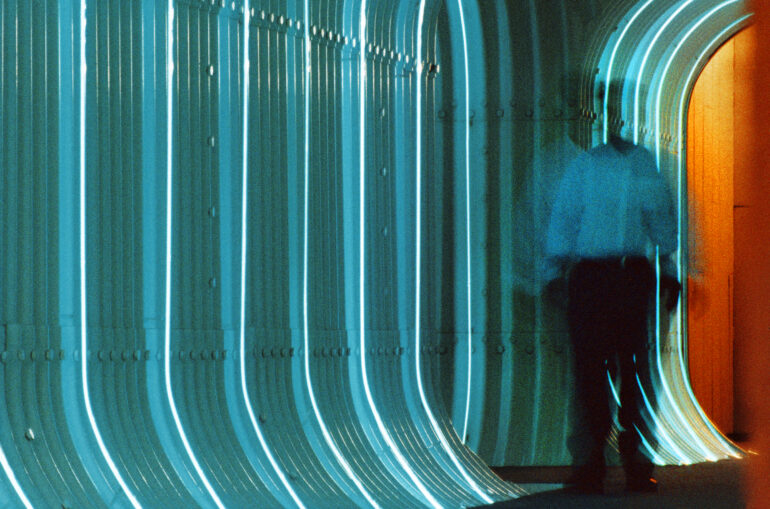
Bobby has shot with various cameras over the years. But his first love was the Nikon F and a 50mm f1.4 lens. He used it to photograph for the Village Voice, Soho News and to photograph bands at CBGB’s and many other rock clubs in NYC. He also used the Hasselblad 500CM and an 80mm lens for portraits. Once he had an established portfolio, he got a scholarship to NYU.
From there, he became a fashion photographer and director of fashion and art videos in the early 1980s. His work caught the attention of Andy Warhol, who reached out to him for a collaboration; but it never happened because Warhol passed away before the shoot.
In the late 1980s, Bobby went deeper into photography as part of giving up on drinking and substance abuse. That’s when he bought a 4×5 camera and started photographing in the NYC streets at night. Drawing on inspiration from Dean Chamberlain’s long exposures, he wandered around NYC looking for dark spaces to leave his shutter open. “I would close the aperture down to f45 and because I was using ASA 100 sheet film, my exposures would range from a few minutes to a few hours,” says Bobby. “Although I used a light meter, there was a lot of guesswork in calculating such long-time exposures. For many images, I would go back to the same areas and reshoot plates over and over again until I got the right exposure.” He loved the results. It allowed him to be much more creative than how he worked with his smaller format cameras.
Mix into all this the fact that he’d cross-process his photos to get a super grainy and saturated look.
I would often use slower shutter speeds for impressionist motion blurs; the shapes still register on film but aren’t too transparent.
Bobby Sheehan
Now here’s where it gets very fascinating! During the daytime, Bobby would use a Nikon 1000mm lens to get extreme closeups of New Yorkers. “I wanted to get close enough with my lens to see into their eyes… sneak peeks into the psyche of the humans walking amongst themselves,” he shares. “All disconnected from each other with their own thoughts circulating inside their heads. Interestingly, there were people who sensed that someone was watching, and they’d spot me across the street with my Nikon F pointed at them.” Sometimes he was spotted, but no one ever said anything to him.
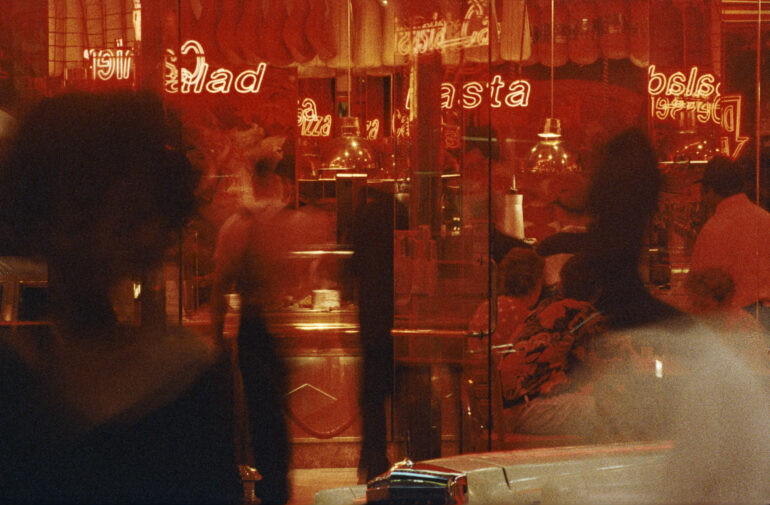
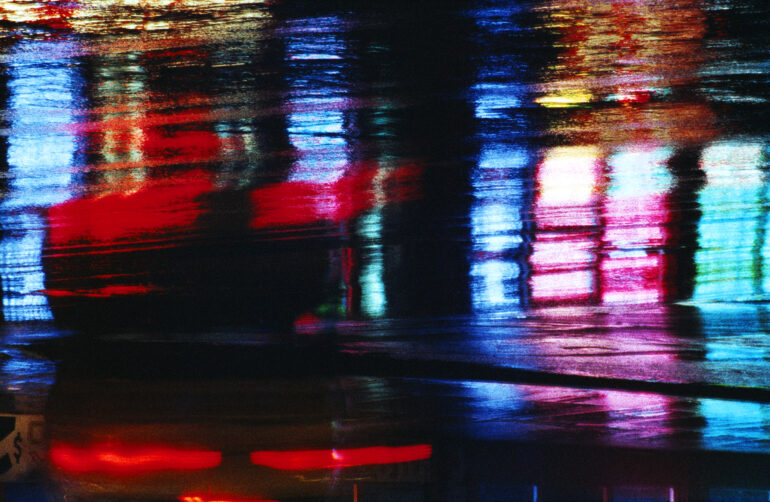
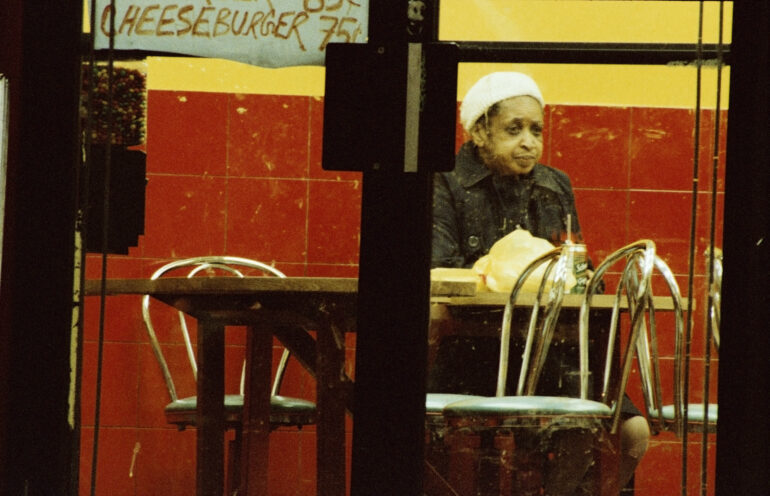
Bobby Sheehan Shares Thoughts on AI Photography
When we look at Bobby’s work, it appears to be what we call unapologetically human. An AI wouldn’t necessarily understand it. So we asked Bobby for his thoughts on what’s happening in the photography world. While acknowledging that young image-makers have a lot of great access, there have been a lot of imposters in things like professional landscape photography. “It’s hard enough for talented photographers to have successful and sustainable careers in an overly crowded workforce,” he states. “So, the idea that artificial intelligence may soon be able to take work away from humans is horrific. There are people saying that it will create new avenues for artists, but I would argue that artificial intelligence could be a creative cancer feeding on its hosts, and we’re the hosts.”
Bobby wouldn’t want a computer creating a soulless image of a loved one. And he’d hate to lose jobs because of it. Further, he thinks it’s also an artistic nightmare. “Personally, I love to feel the hand of the artist on a piece of art,” he shares. “Whether it’s a painting, a piece of music or a photograph there is a human fingerprint on that art. I’m fine with being viewed as old fashioned because I’d rather be one of the humans not going away without a fight.”
